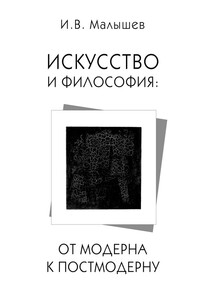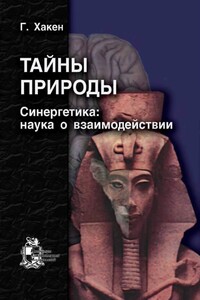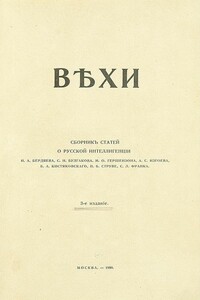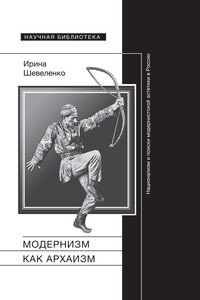Философские идеи Людвига Витгенштейна - [61]
4. Understanding the essence of the late Wittgenstein's analytic programmes and of his practical methods is hindered by the obtaining practice of reading his analytic considerations (excercises, illustrations and so on) in terns of usual theory. The result is viewing the "language-game" idea as a relativist, subjectivist theory of language, as the idea of "family resemblances" - so, it is treated as a theory of abstraction deserving severe criticism, as a frequently practiced analytical device of translating inner (mental, etc.) phenomena of psychology onto the plane of an external, available to the analysis, concrete action, i.e. as the behaviorist theory of consciousness This "shift in attitude" gives rise to various absurdities: the positions asccribed to the philosopher are those which he himself criticizes, etc. The correct reading of Wittgenstein's texts requires one to take into consideration the fact that the analytic ideas elaborated by him have practical-methodological - rather than theoretic - nature; so, they should be viewed as artificial procedures whose aim is create the habit of accuracy in correlating the verbal with the real. Meanwhile, both readers and investigators of Wittgenstein find it difficult to realize that the author of the analytic interpretation of philosophy could give up theoretical mode of thinking; that philosophy is, in his view, an activity (practice) - rather than a doctrine - aimed at clarifying the conceptual-speech forms through which the complicated, variable and dynamic reality is represented. Along with our critical, polemic attitude towards the analytic interpretation of nature and of the tasks of philosophy as to insufficient one, as to the one overlooking a whole complex of important problems[202] , we would like to stress the need for dialectical-materialist interpretation (and pracctical application) of the authentic content present in the logical-speech analysis which is the real achievement of the XXth century analytic thought.
A.F. Griaznov. The problem of "conceptual necessity" in L.Wittgenstein's works[203]
1. The idea of "conceptual necessity" was investigated in the socalled logic of "internal relations" of British Absolute Idealism. At the center of its metaphysics lied a justification of the necessary character of judgements with their specific conceptual unity (it was supposed that sich a unuty could not be created by lodical constants). Conceptual ties were interpreted as the products of symbolism itself and treated as entirely dependent on the related terms. Necessary and internally essentical character of conceptual ties was explained by an intermediary activity of the "Absolute". In the beginning of the 20th century Russell's logic of "external relations" and his "multiple" theory of judgement stood in opposition to the logic of Absolute Idealism; it rehabilitated independent character of relation is and pluralistic ontology. This theory explained our ability to understand judgement's sense by our direct "acquaintance" with all the constituents. Traditional subject-predicate analysis of judgement's structure was super-seded by "functional" analysis. Inspite of the fact that this early analytical logic of "external relations" was widely accepted for some period of time a restoration of the priority of "internal relations" and the idea of "conceptual necessity" took place in Anglo-American philosophy after that. And this in general was due to lodical and philosophical activity of L.Wittgenstein.
2. Wittgenstein worked out his original "picture" theory in polemic with Russellian views. Wittgensteinian theory was based on idea of conceptual unity and isomorfism of sentence's "logical form" and an elementary fact which is pictured by the sentence. His acknowledgement that the "world" consists of "facts" and not of "things" stresses purely internal relations of logical "objects". There is a close correspondence between these relations and the relations of senses of the sentences. Early Wittgenstein distinguished between "signs" (which have "material" qualities) and "symbols" (which are signs used according to the rules of "logical syntax" and which have sense). "Symbols" are conceptual by their very nature and that is why all logical relations in the

Сборник статей доктора философских наук, профессора Российской академии музыки им. Гнесиных посвящен различным аспектам одной темы: взаимосвязанному движению искусства и философии от модерна к постмодерну.Издание адресуется как специалистам в области эстетики, философии и культурологи, так и широкому кругу читателей.

Санкт-Петербург - город апостола, город царя, столица империи, колыбель революции... Неколебимо возвысившийся каменный город, но его камни лежат на зыбкой, болотной земле, под которой бездна. Множество теней блуждает по отражённому в вечности Парадизу; без счёта ушедших душ ищут на его камнях свои следы; голоса избранных до сих пор пробиваются и звучат сквозь время. Город, скроенный из фантастических имён и эпох, античных вилл и рассыпающихся трущоб, классической роскоши и постапокалиптических видений.

Книга представляет собой перевод на русский язык знаменитой «Тайны природы» Германа Хакена. Ее первейшая цель — донести до читателя идеи синергетики, позволяющие познать удивительные, необычайно разнообразные, организованные структуры, созданные самой природой. Для самого широкого круга читателей.

ВЕХИ. Сборник статей русских философов начала XX века о русской интеллигенции и её роли в истории России. Издан в марте 1909 г. в Москве. Получив широкий общественный резонанс, к апрелю 1910 г. выдержал четыре переиздания общим тиражом 16000 экземпляров. Михаил Осипович Гершензон. ПРЕДИСЛОВИЕ Николай Александрович Бердяев. ФИЛОСОФСКАЯ ИСТИНА И ИНТЕЛЛИГЕНТСКАЯ ПРАВДА Сергей Николаевич Булгаков. ГЕРОИЗМ И ПОДВИЖНИЧЕСТВО Михаил Осипович Гершензон. ТВОРЧЕСКОЕ САМОСОЗНАНИЕ Богдан Александрович Кистяковский.

Первое издание на русском языке в своей области. Сегодня термин «вождь» почти повсеместно употребляется в негативном контексте из-за драматических событий европейской истории. Однако даже многие профессиональные философы, психологи и историки не знают, что в Германии на рубеже XIX и XX веков возникла и сформировалась целая самостоятельная академическая дисциплина — «вож-деведенне», явившаяся результатом сложного эволюционного синтеза таких наук, как педагогика, социология, психология, антропология, этнология, психоанализ, военная психология, физиология, неврология. По каким именно физическим кондициям следует распознавать вождя? Как правильно выстроить иерархию психологического общения с начальниками и подчиненными? Как достичь максимальной консолидации национального духа? Как поднять уровень эффективности управления сложной административно¬политической системой? Как из трусливого и недисциплинированного сборища новобранцев создать совершенную, боеспособную армию нового типа? На все эти вопросы и множество иных, близких по смыслу, дает ясные и предельно четкие ответы такая наука, как вождеведение, существование которой тщательно скрывалось поколениями кабинетных профессоров марксизма- ленинизма. В сборник «Философия вождизма» включены лучшие хрестоматийные тексты, максимально отражающие суть проблемы, а само издание снабжено большим теоретическим предисловием В.Б.

Книга посвящена интерпретации взаимодействия эстетических поисков русского модернизма и нациестроительных идей и интересов, складывающихся в образованном сообществе в поздний имперский период. Она охватывает время от формирования группы «Мир искусства» (1898) до периода Первой мировой войны и включает в свой анализ сферы изобразительного искусства, литературы, музыки и театра. Основным объектом интерпретации в книге является метадискурс русского модернизма – критика, эссеистика и программные декларации, в которых происходило формирование представления о «национальном» в сфере эстетической.